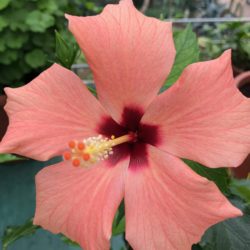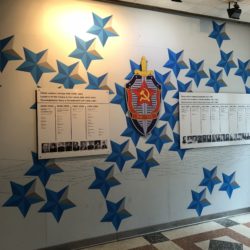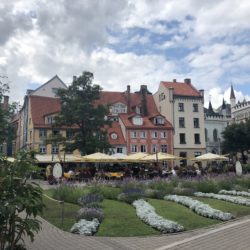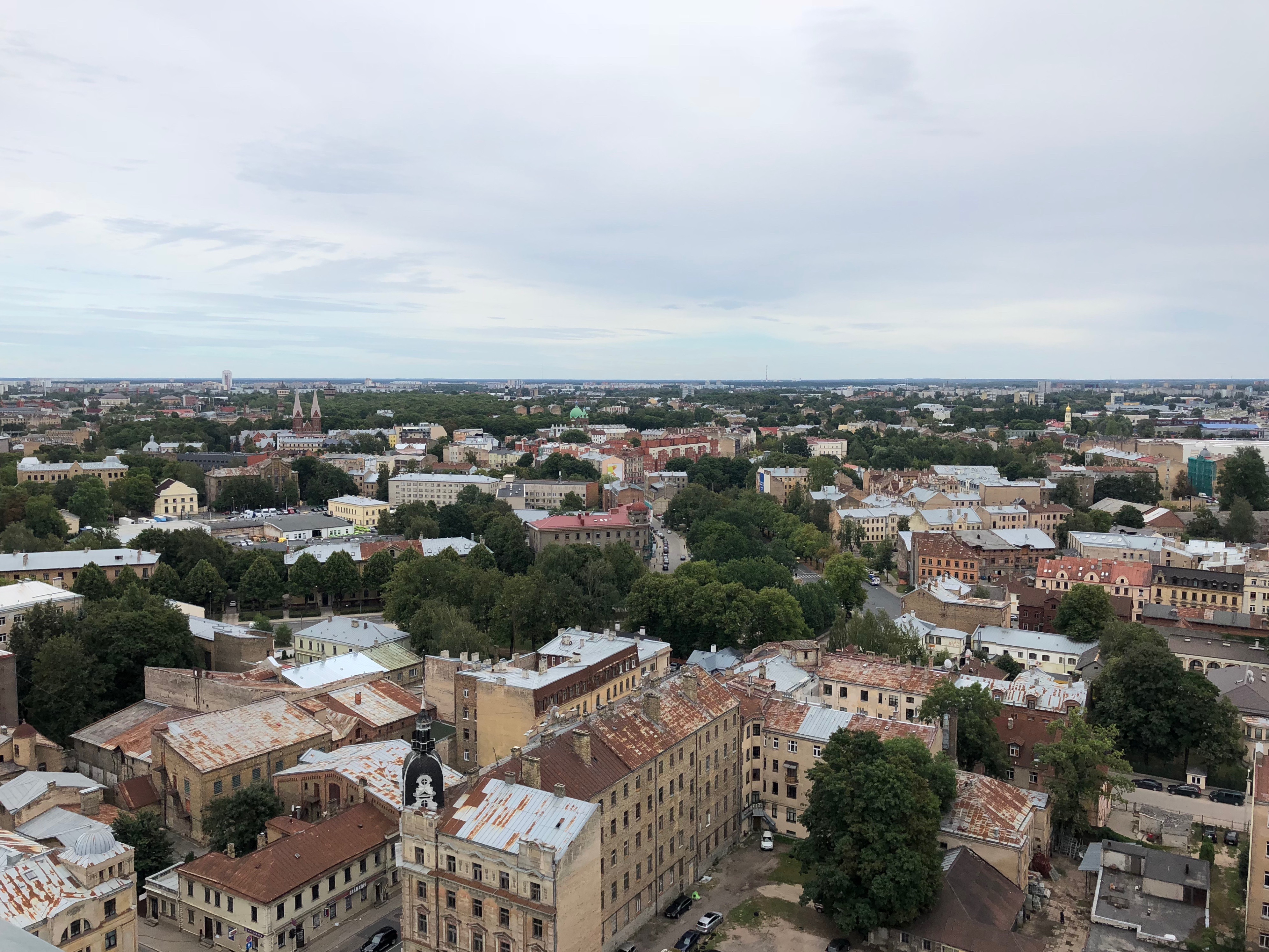
During my travels, I’ve learned that the bulk of what makes most Eastern European capitals so interesting is what lies beyond the manicured and tourist-friendly Old Towns, and Rīga is no exception. Over the five days I spent in the Latvian capital, I only whiled away one morning in Vecrīga, and that was enough. I’ve already written about some things to see and do outside of the old city (Victory Monument, KGB Building, Zuzeum, Rīga Ghetto Museum), and in this post I’ll explore some other highlights in three neighborhoods beyond Vecrīga’s borders: Centrs (Central Rīga), Pārdaugava and Maskavas Forštate (Moscow Suburb).
Centrs (Central Rīga)
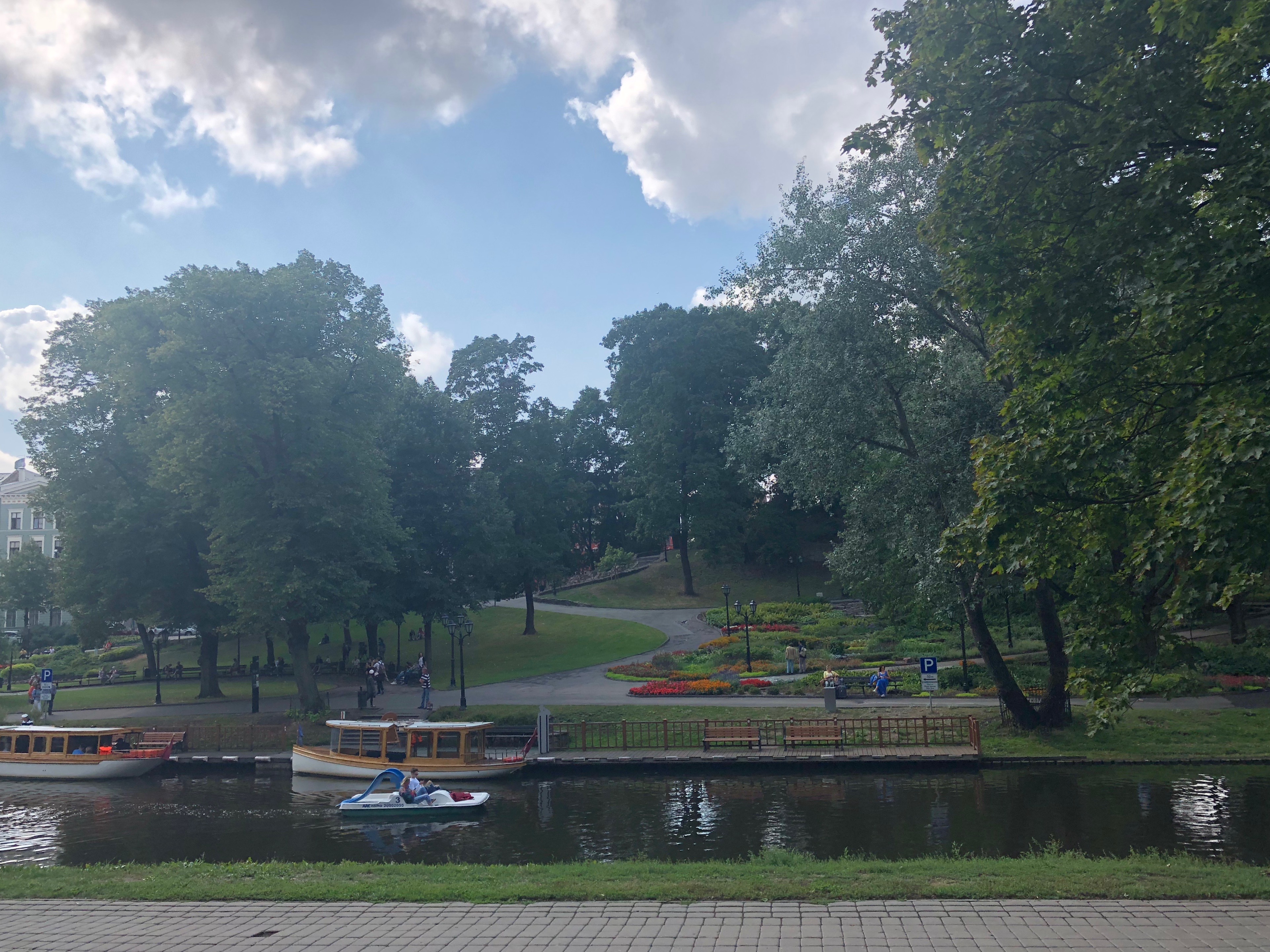
Strolling along the Pilsētas Kanāls (City Canal) is the perfect way to take a calming breath before jumping into this hustle and bustle of Rīga’s lively Centrs district. The canal used to act as the moat that protected medieval Rīga from foreign invaders. As the city grew, this division between Vecrīga and Centrs became a popular green space for the city’s residents.
Brīvības piemineklis (Freedom Monument)
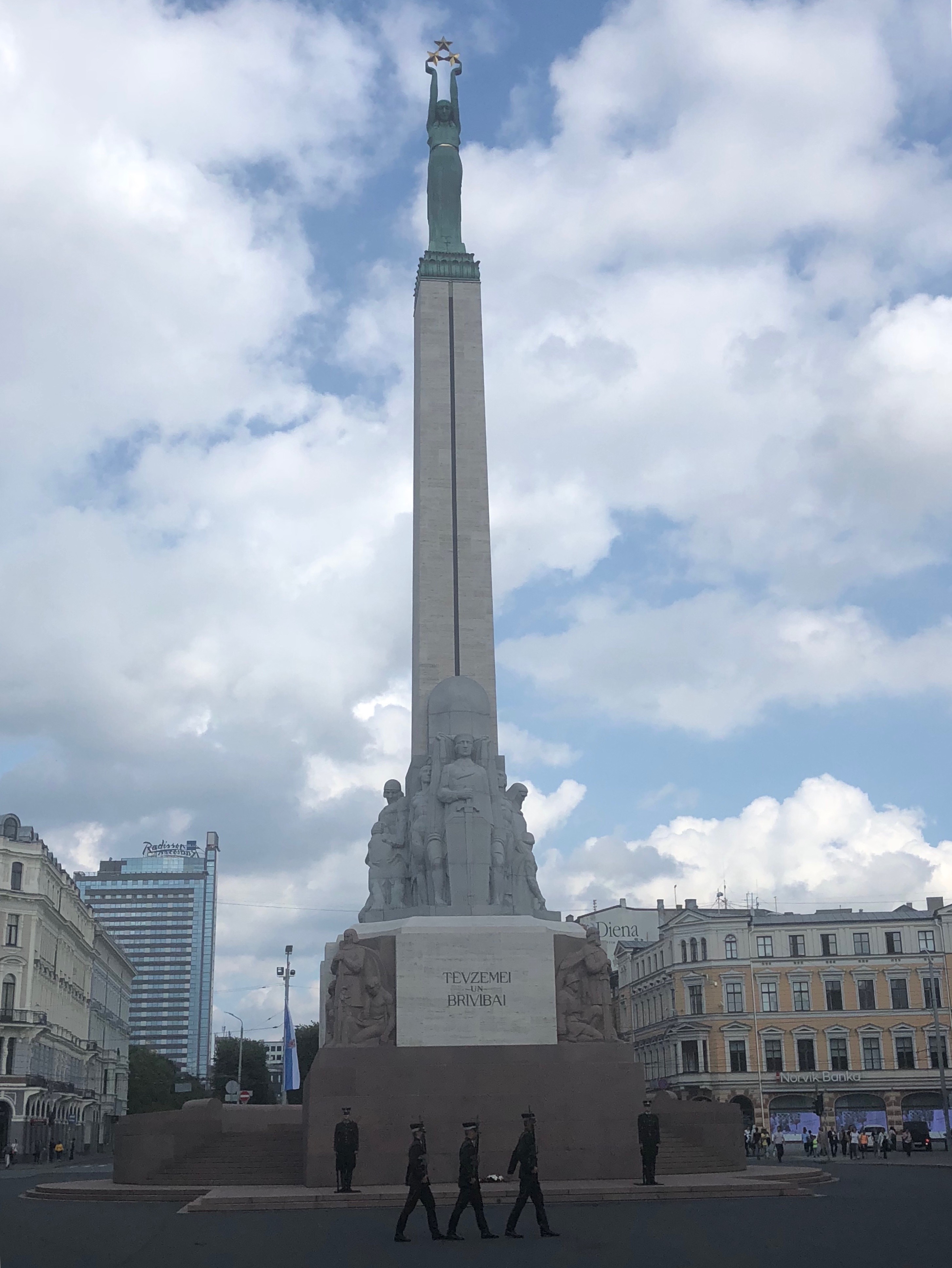
The Brīvības piemineklis (Freedom Monument) was unveiled in 1935 to honor those who had died in the Latvian War of Independence from 1918-20. In addition, a flower-laying ceremony was to be organized every year in the monument’s square. After the Soviets re-occupied Latvia post-WWII, the monument was set for demolition, but authorities had second thoughts for fear that the destruction of the pillar would lead to national rebellion. Instead, they simply decided to rewrite history, officially claiming that the monument was built in 1945 to glorify Stalin “freeing” Latvia from Nazi control and that the three stars on top signified the Estonian, Latvian and Lithuania SSRs, when in actuality they were meant to denote the three historical regions of Latvia. Compartmentalizing such false information was part and parcel of living in the Soviet Union.
Anyone who dared lay flowers at the base of the monument was given a one-way ticket to Siberia, but in 1987, 5,000 citizens of Rīga defied the ban and laid flowers in protest. After Latvia regained its independence, the history books were restored and massive celebrations are held at the monument each year. Between 9-18h you can witness the changing of the guard, on the hour, weather permitting.
Esplanāde
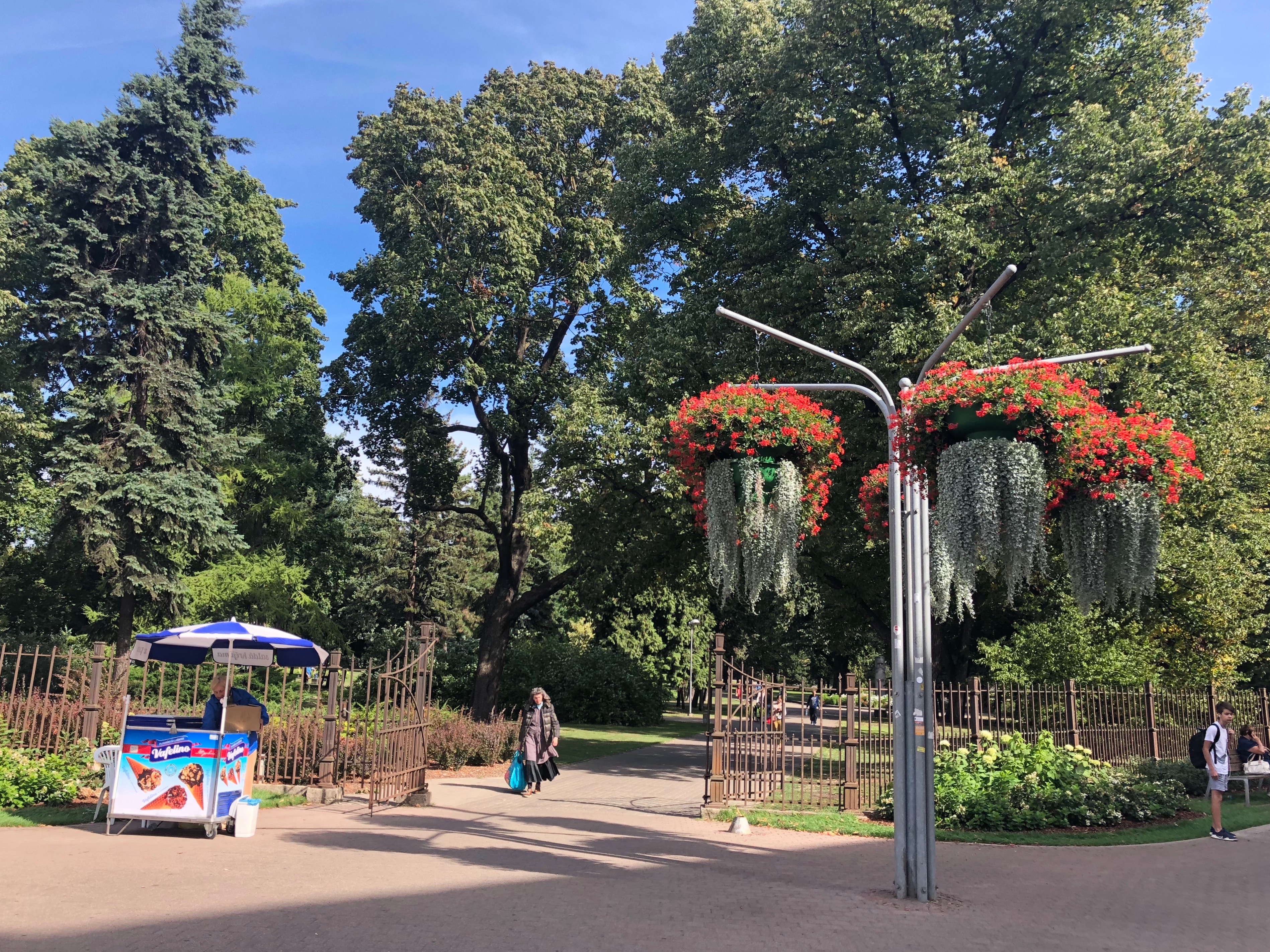
The Esplanāde is a large park where you sure to bump into an ice cart at every turn. On warm evenings, concerts and other special events take place at the large bandstand; afternoons find students reading in the grass or hanging out with friends. A 24-hour flower market is located on the edge of the park as well.
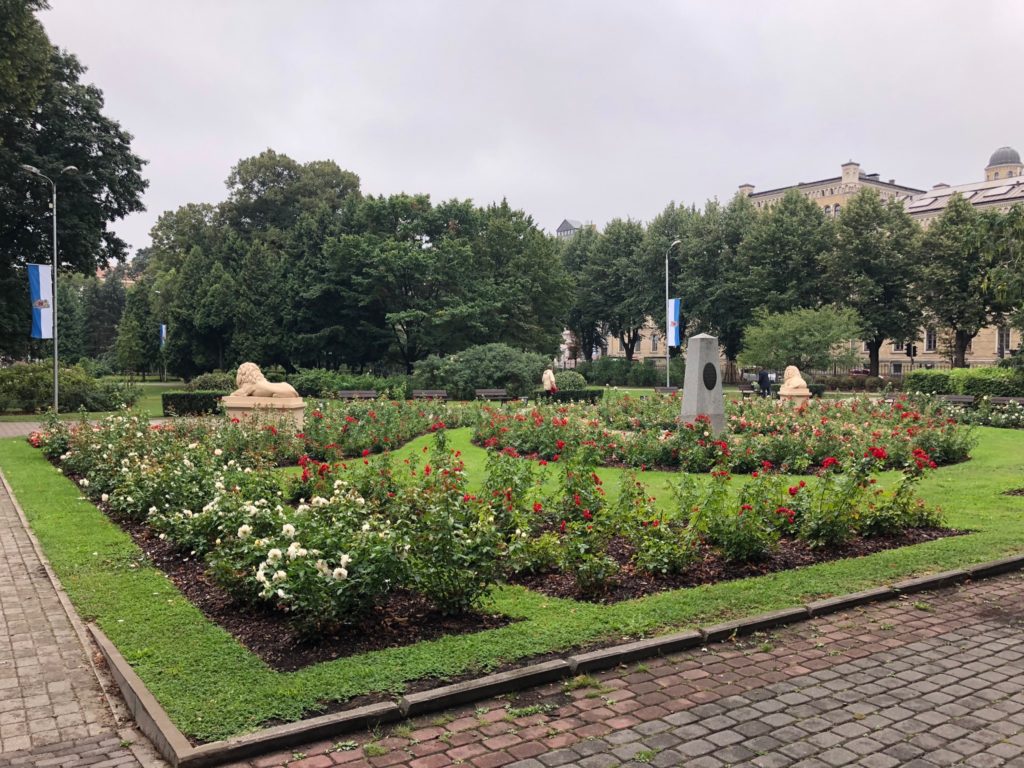
Kristus Piedzimsanas katedrāle (Nativity of Christ Cathedral)
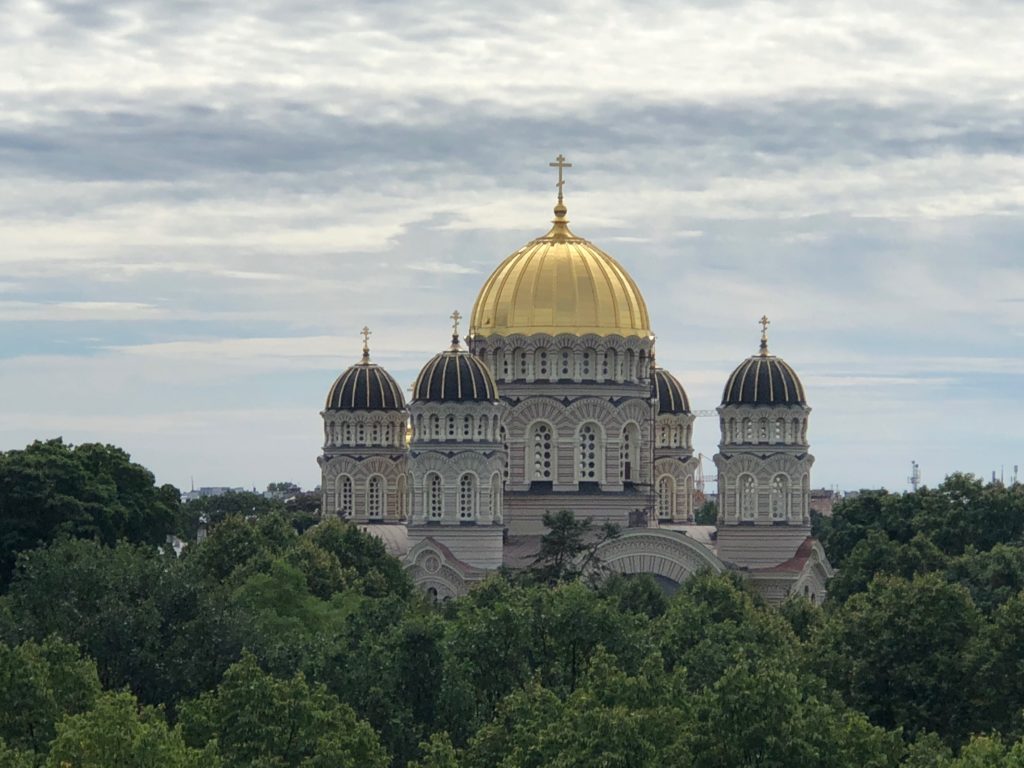
The eastern edge of the Esplanāde is home to the Kristus Piedzimsanas katedrāle (Nativity of Christ Cathedral). Built in 1883 during Latvia’s incorporation into the Russian Empire, the cathedral became the largest Orthodox cathedral in the Baltics. Somehow the structure survived WWII, but the Soviets, always eager to stamp out religion, turned the cathedral into a planetarium; it was returned to the Orthodox Church in 1991. What all of the guidebooks fail to mention is that there is a strict dress code- don’t expect to enter wearing shorts or tank tops. Sadly, I was clad in shorts and was turned away at the door, so don’t make my mistake and dress appropriately if you wish to see the interior.
Latvijas Nacionālā opera un balets (Latvian National Opera And Ballet)
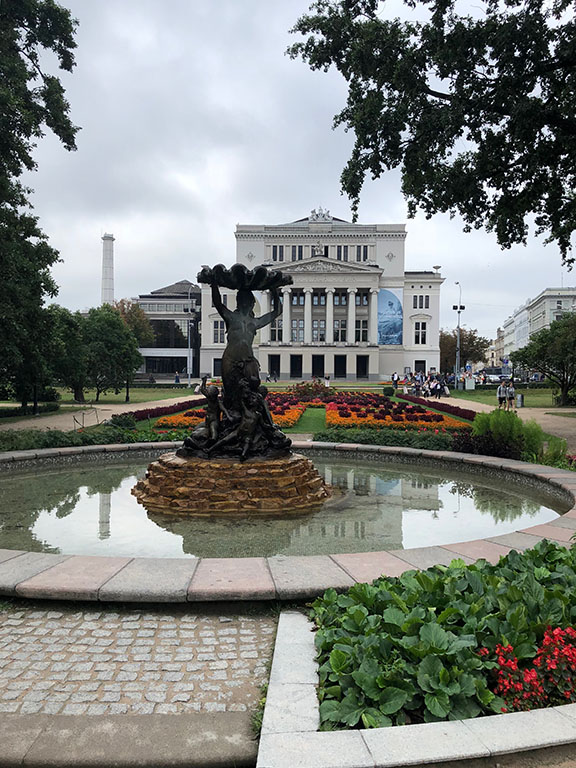
Rīga’s opera house was built in 1863 as a German-language theater, only becoming the home to the Latvian Opera near the turn of the century. In addition to the standard international repertoire, this company is one of the few places in the world to catch a homegrown Latvian opera that you wouldn’t normally see at The Met, La Scala or Covent Garden. Unfortunately, the opera was on a break when I visited, but that’s just another reason to return to Rīga.
Barikādes (Barricades Memorial)
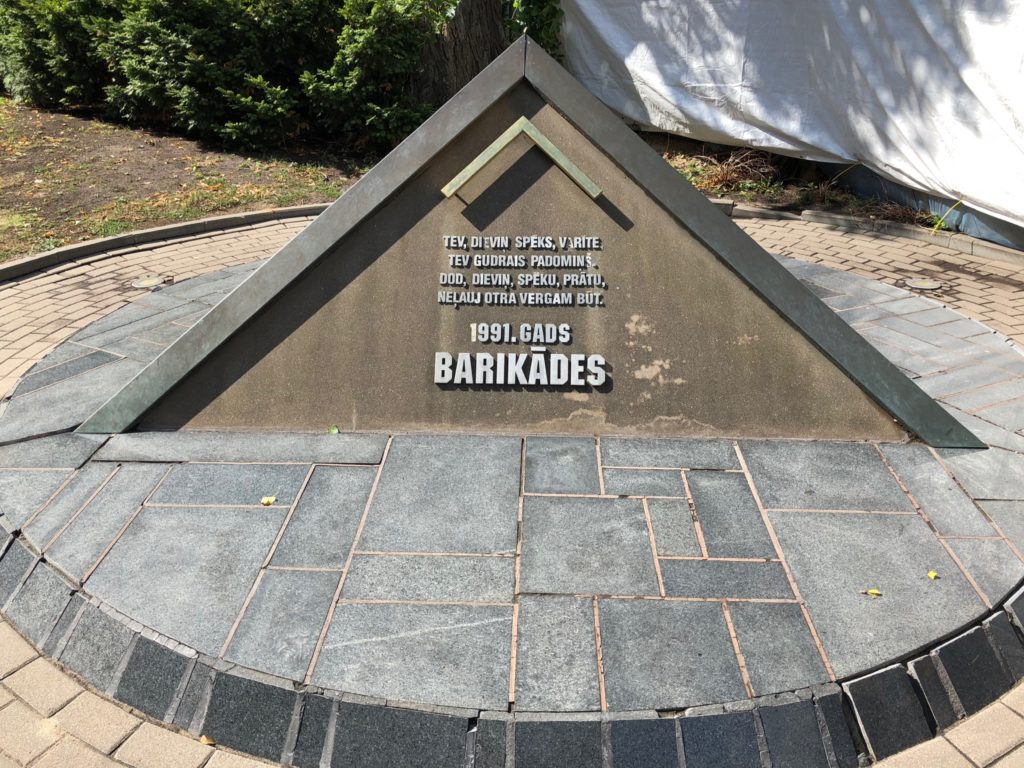
You could easily miss it, but swing by the barricade memorial to see where nine Latvians died while defending Rīga against the Soviets in 1991. It’s difficult to image Rīga as a war zone merely thirty years prior.
Miera iela
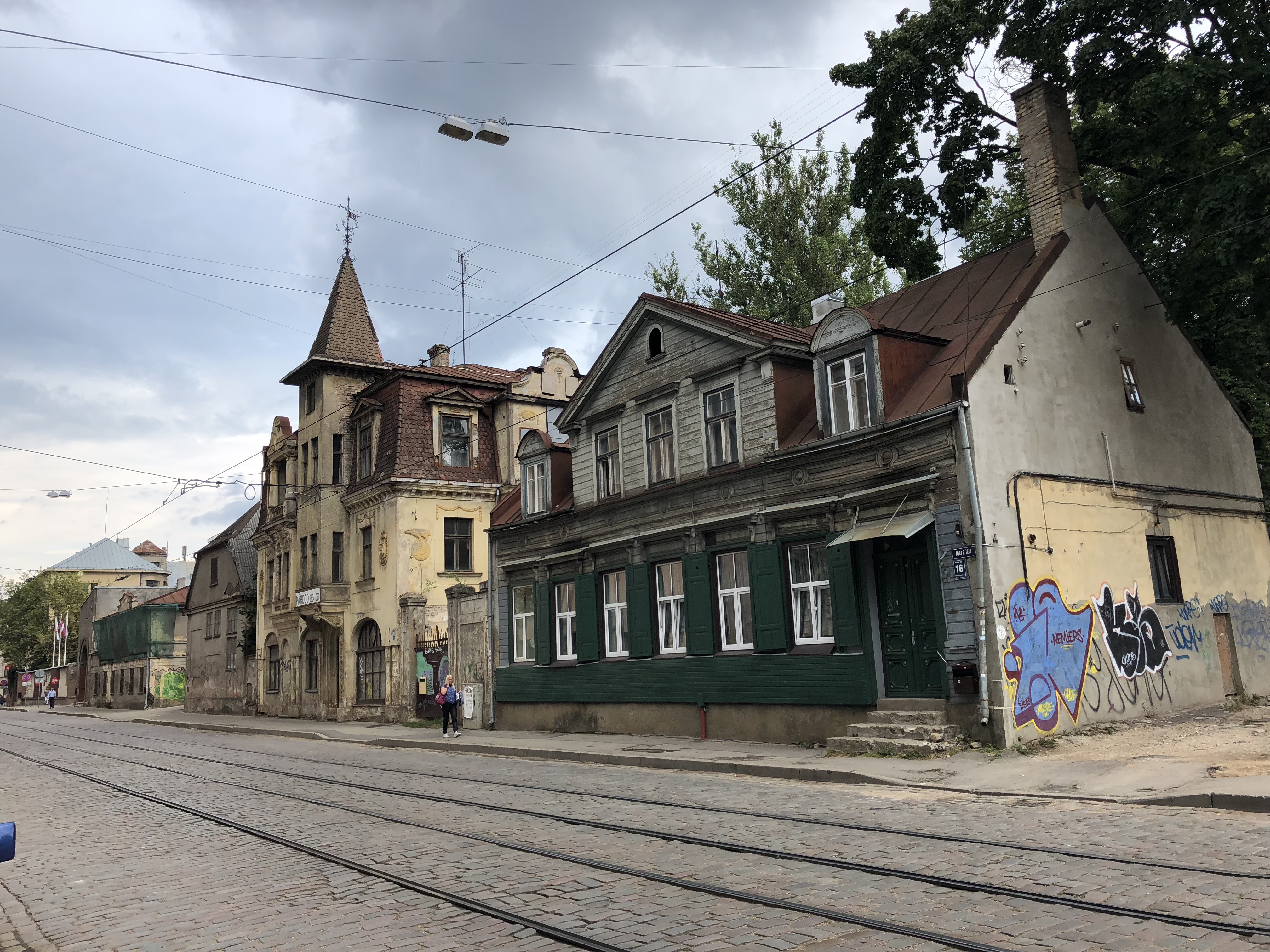
Technically still within the confines of Centrs, Miera iela is a unique sub-district of Central Rīga. A once-industrial and rundown area is slowly being transformed into a trendy coffee shop and craft beer haven for the hipsters of the capital. Stretching north past the former KGB Building, Miera iela remains relatively tourist-free and the buildings have yet to receive their post-Soviet makeover.
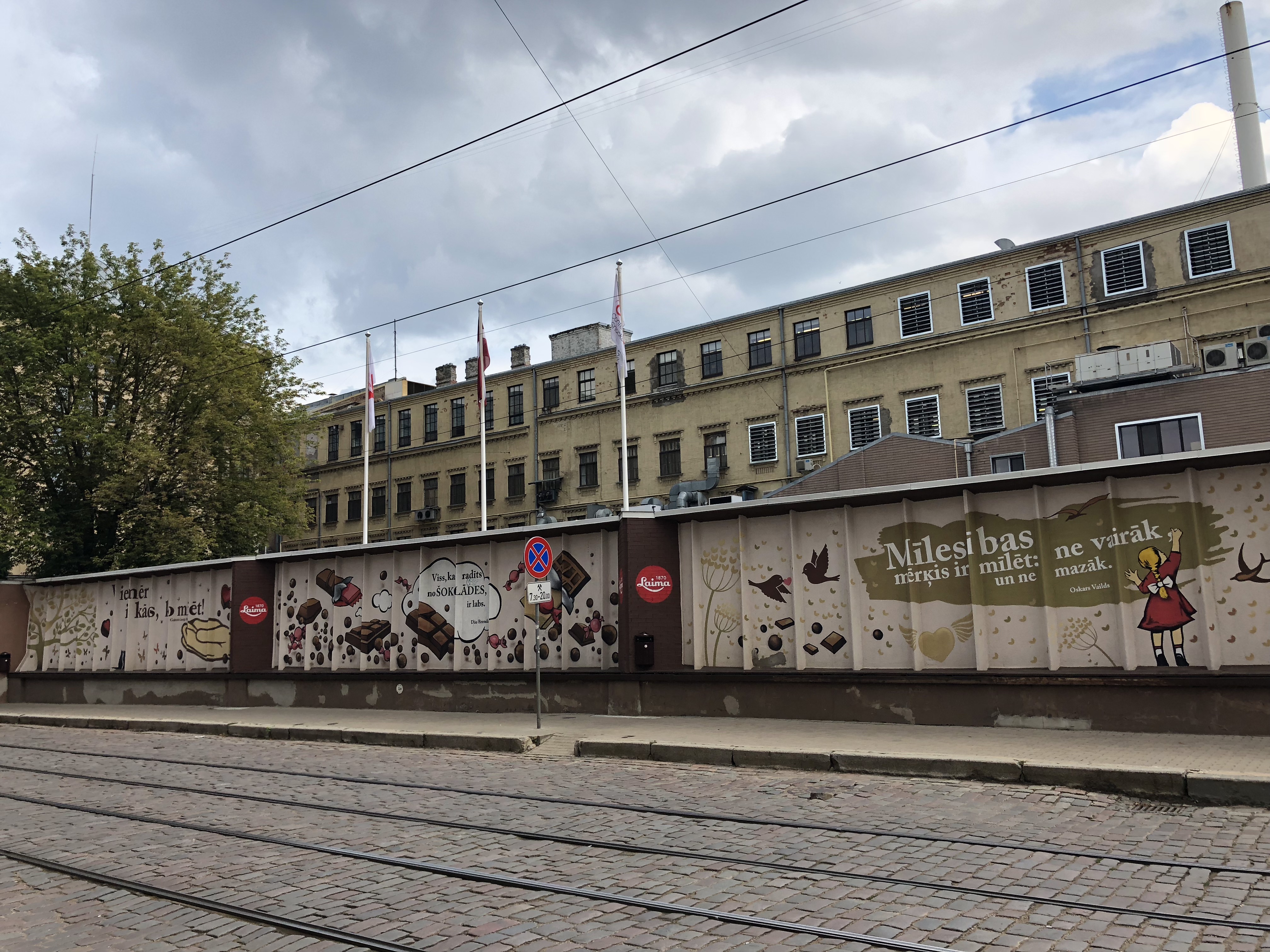
Laima, established in 1870, is Latvia’s beloved chocolatier. You can find their chocolate bars and bon-bons in every supermarket, or better yet swing by the factory on Miera iela and raid the chocolate shop. (Note for my father and other weirdos who don’t like cocoa: there are plenty of white chocolate options to satisfy your sweet tooth.) Tours of the factory are available to the public when booked in advance.
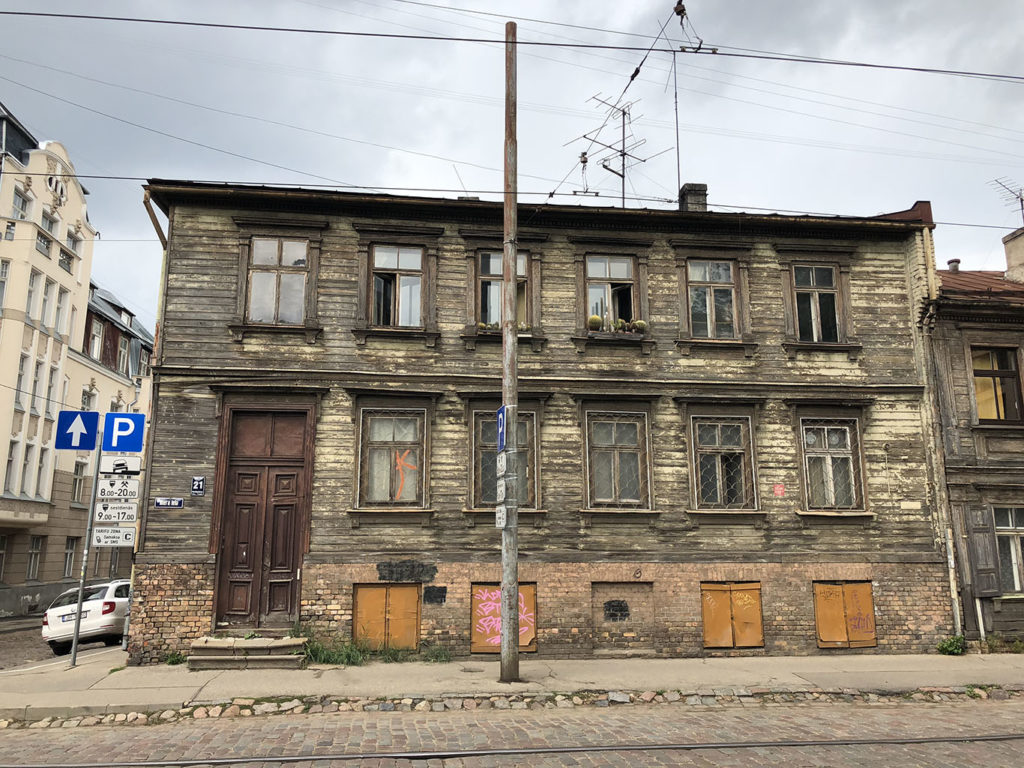
Maskavas Forštate (Moscow Suburb)
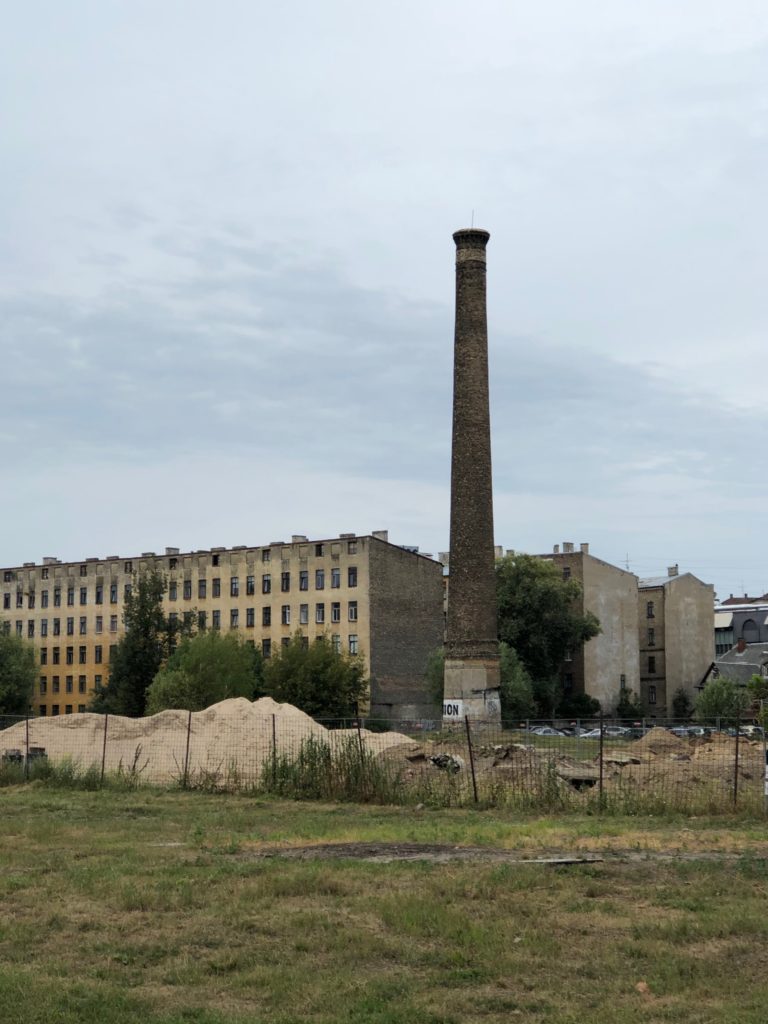
I already took us on a slight detour to Maskavas Forštate when I wrote about the Rīga Ghetto Museum, but there’s much more to see in this fascinating district. Stretching east past the central train station, Maskavas Forštate is like a time warp into Latvia’s Soviet past. Check out the graffitied walls, Soviet-block apartment buildings and crumbling factories before they’re all torn down and replaced with shiny new edifices as the capital’s ongoing facelift oozes into the outer-lying neighborhoods.
Latvijas Zinātņu Akadēmija (Latvian Academy of Sciences)
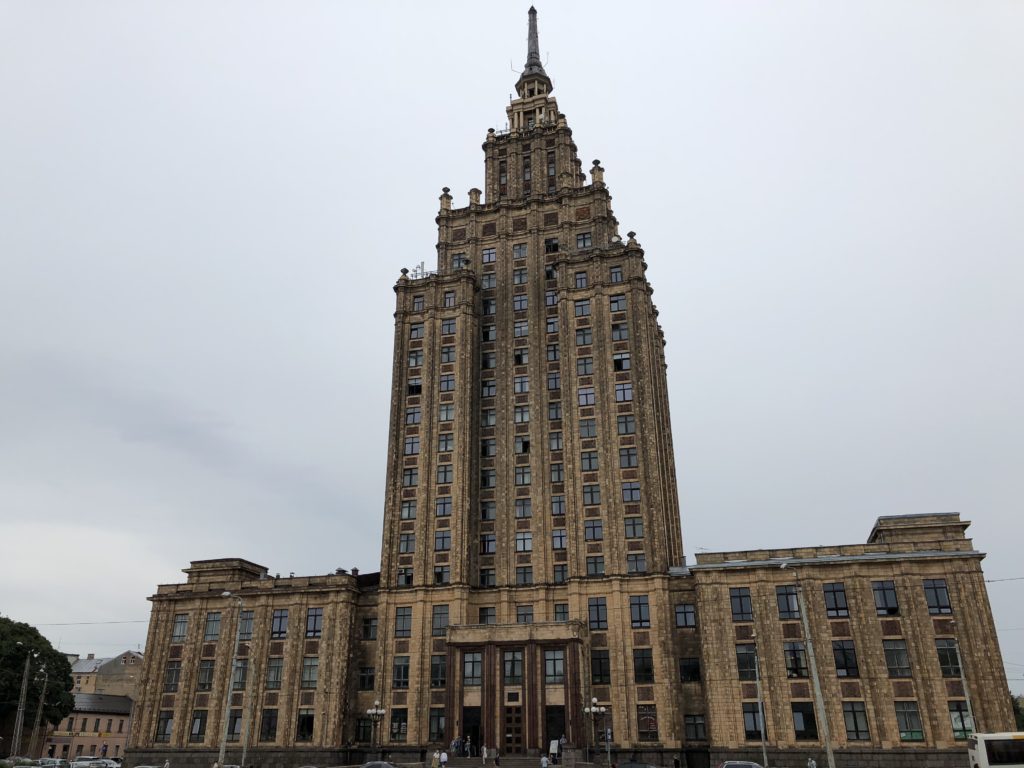
Construction of the Latvijas Zinātņu Akadēmija (Latvian Academy of Science), Latvia’s first high-rise building, began in 1951 as a gift to the city from Stalin. Mocked locally as “Stalin’s Birthday Cake,” the dictator died before it was finished in 1961. The Latvian Academy of Sciences still operates out of the building, but visitors are welcome to ride the elevator to the 17th floor and walk around the 360-degree-open-air viewing platform for a few Euros. The magnificent panorama is worth every cent.

The Televīzijas Tornis (TV Tower) rises up 368m (1207ft) on Zaķusala island in the middle of the Daugava River, making it the tallest structure in Latvia. Built by the Soviets in the 1980s, the tower still broadcasts television and radio stations all over Latvia today.
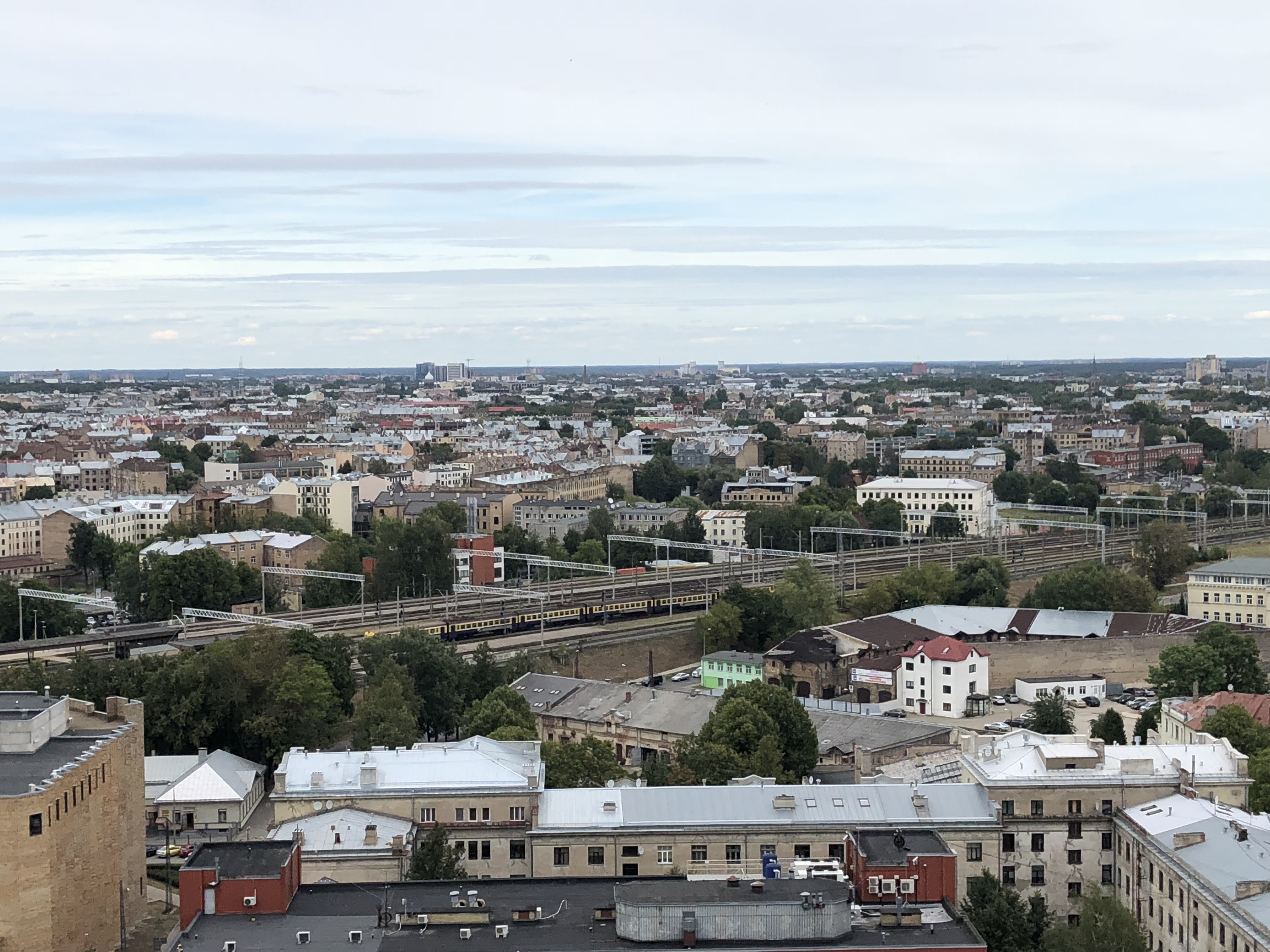
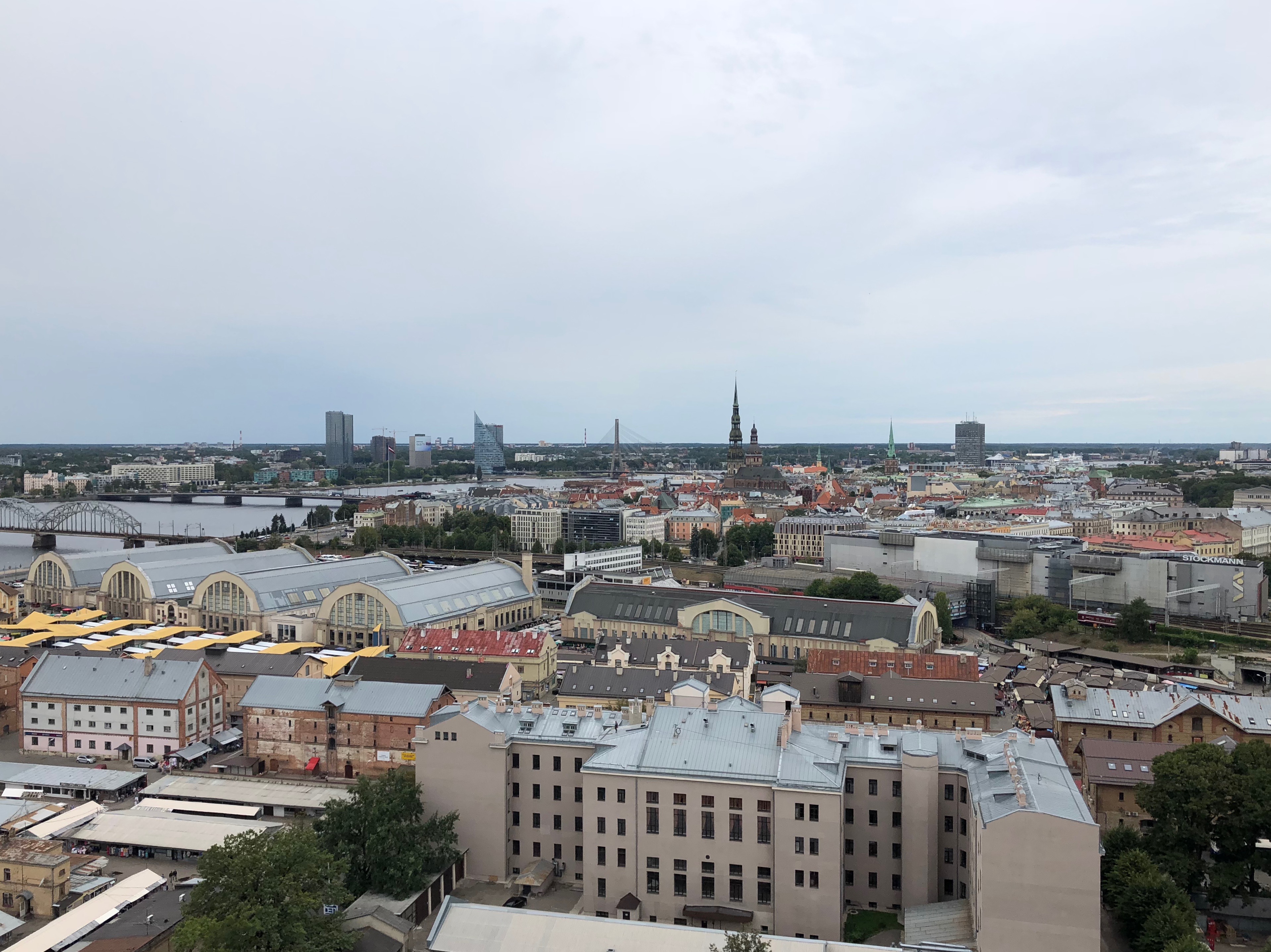
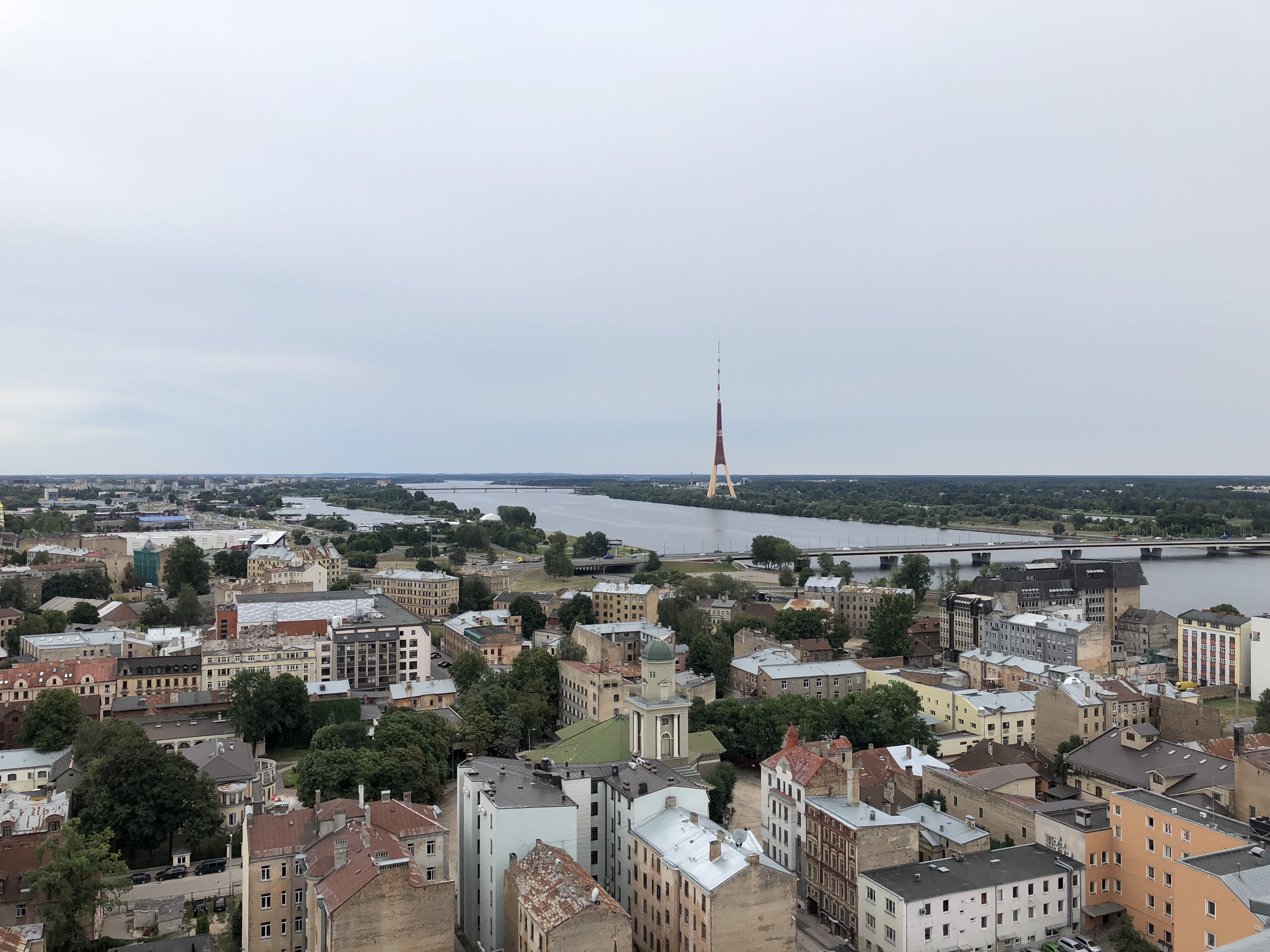
Centrāltirgus (Central Market)
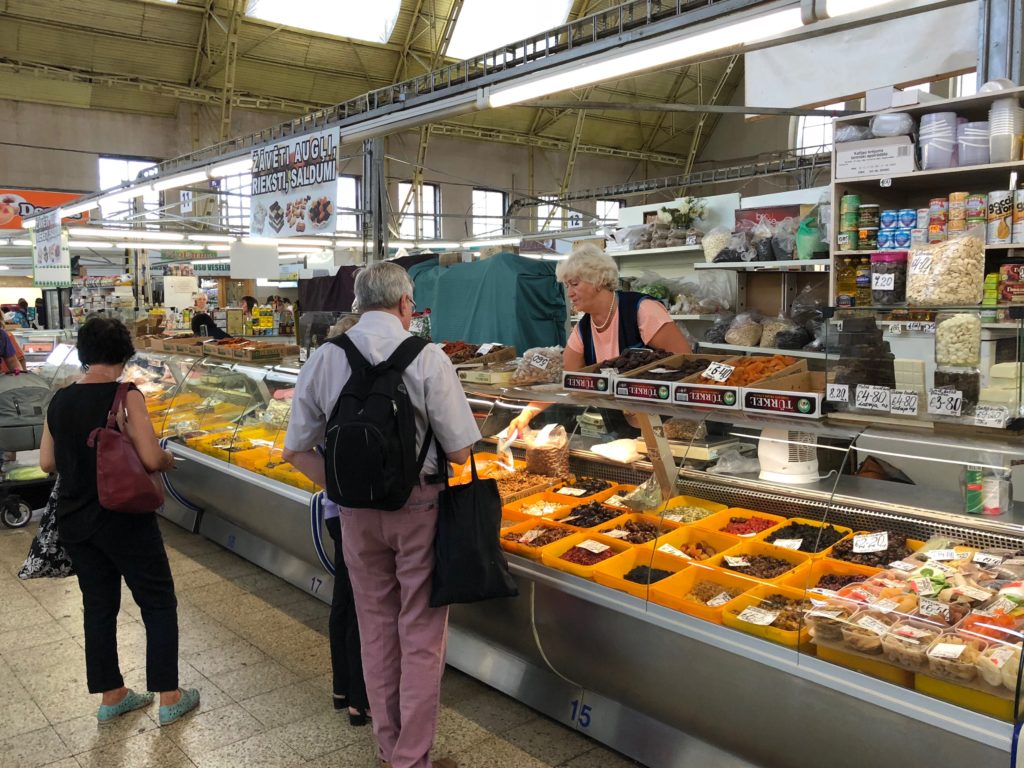
It is estimated that 40,000 people visit the 1250 vendors at the Centrāltirgus (Central Market) in Maskavas Forštate each day. Opened in 1930 and constructed out of five German Zeppelin hangers, this enormous market sells everything from fresh fruits and vegetables to eggs, cheese, meat and bread. (Look out for the bakery corner if you have a hankering for mouth-watering pastries and tortes.)
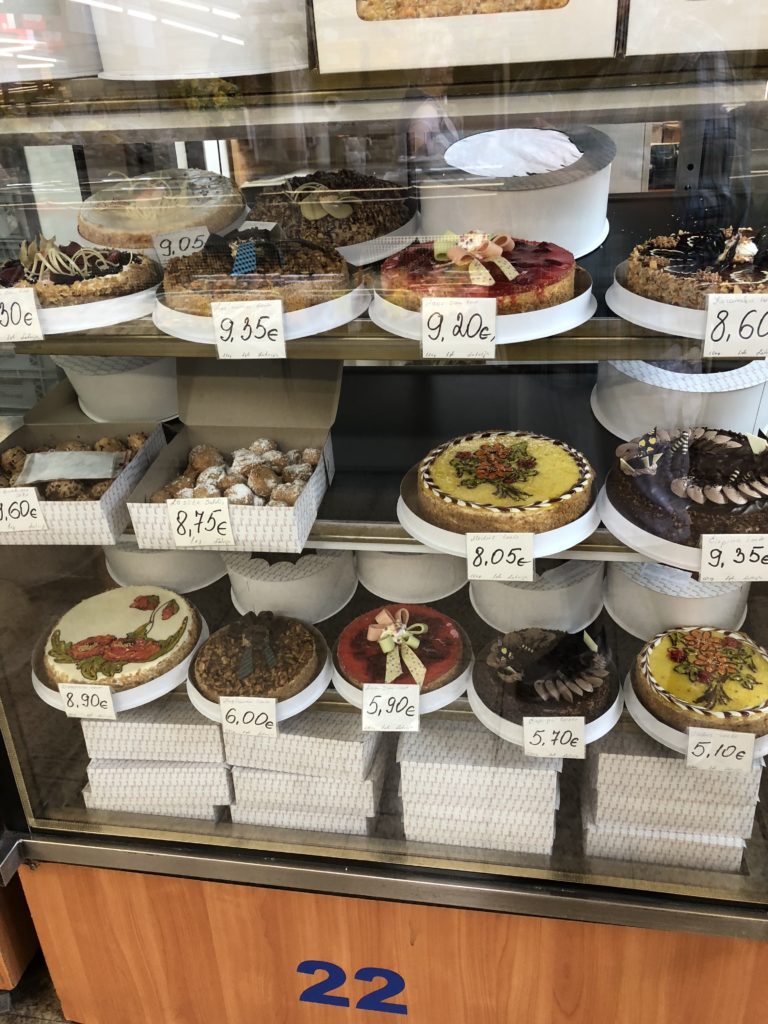
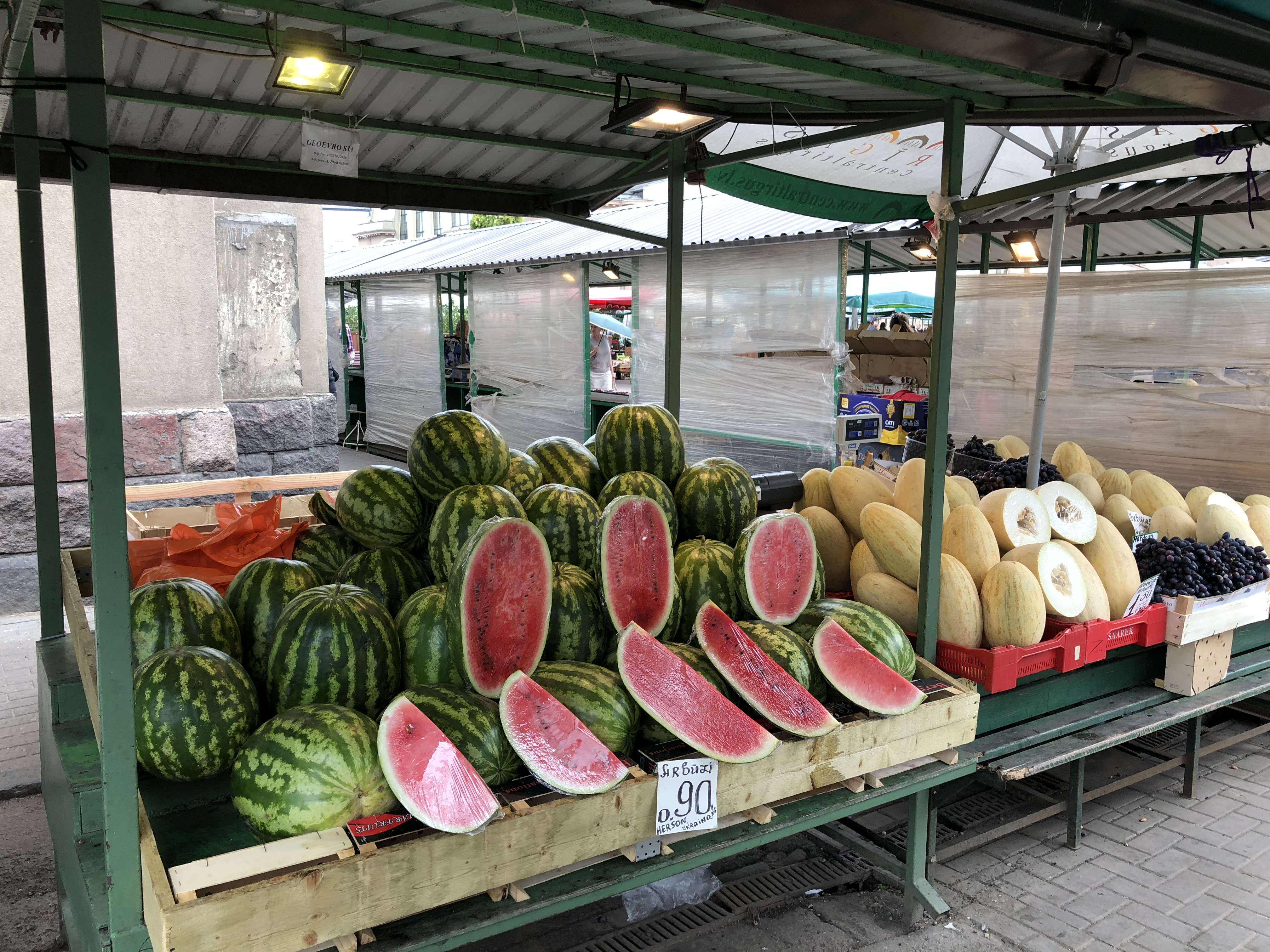
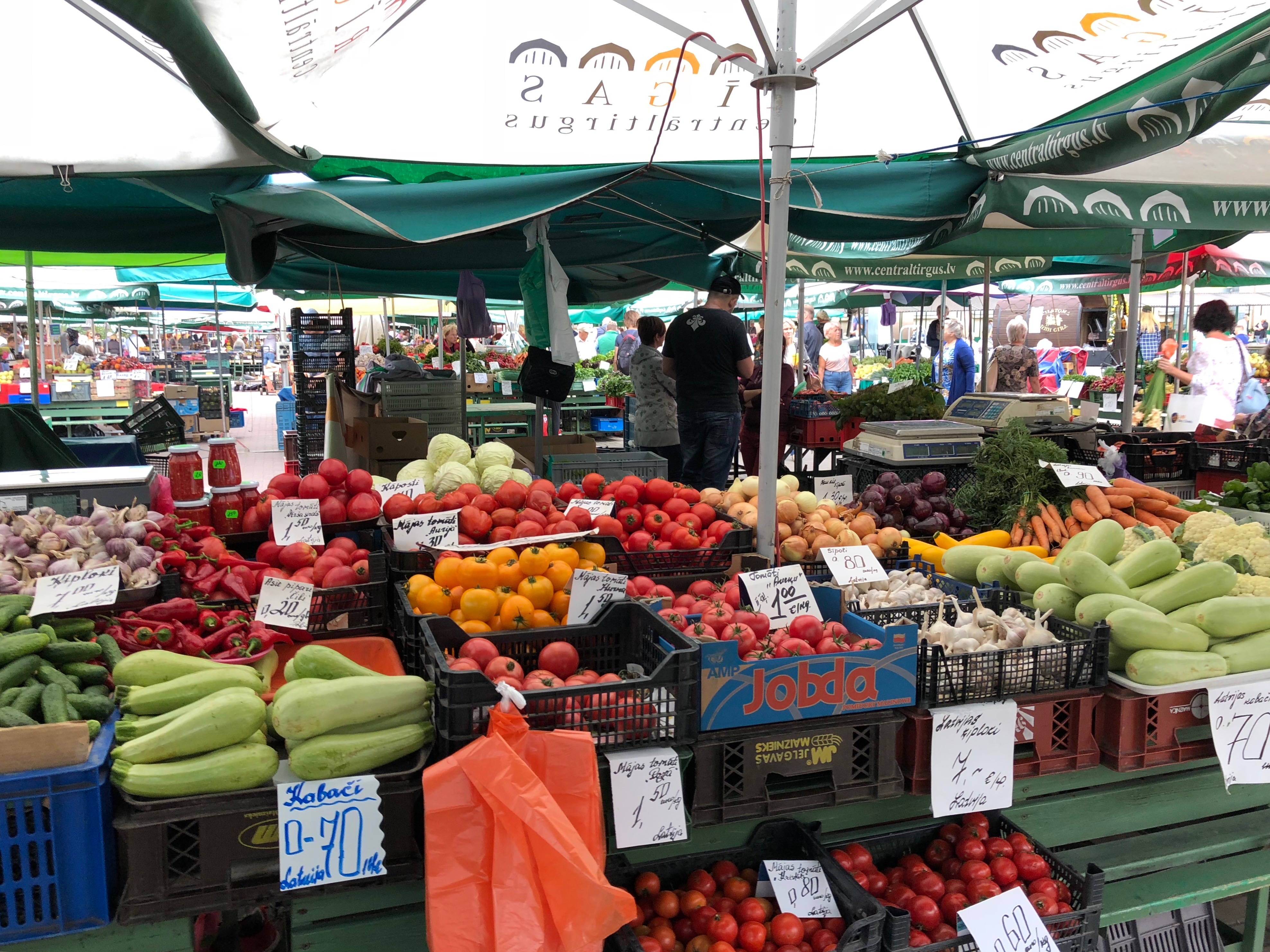
Latgalīte (Flea Market)
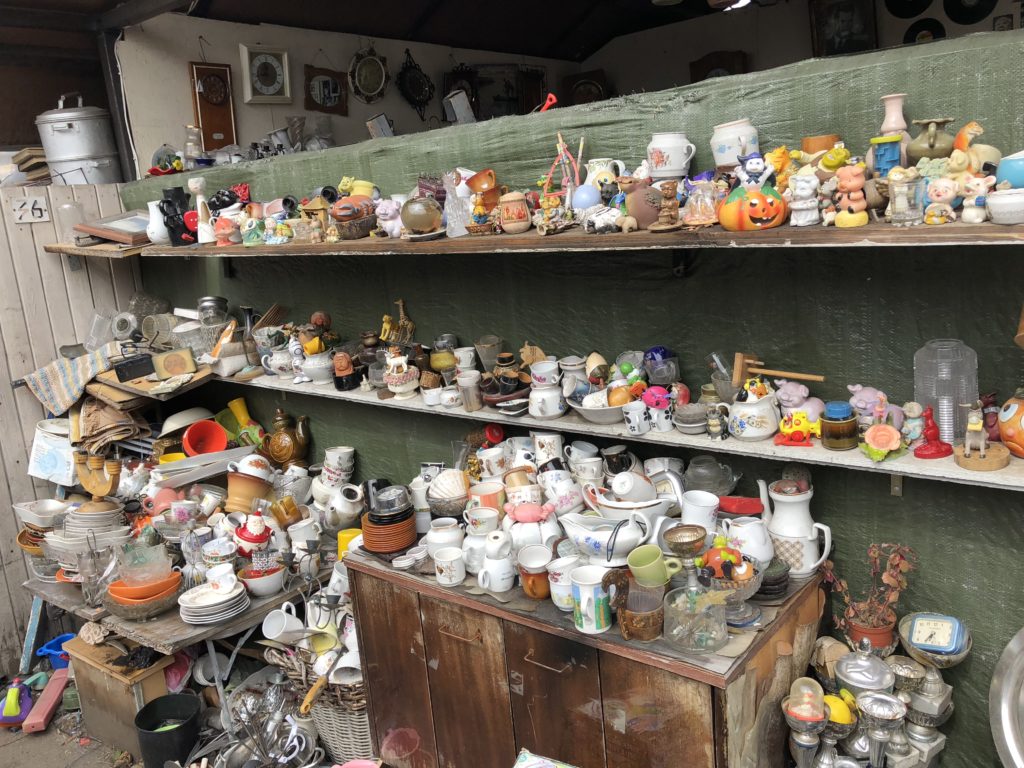
Deeper into the Maskavas Forštate you may be lucky enough to stumble upon Latgalīte, the infamous (Soviet) flea market of Rīga. You can discover out-of-print LPs, old electronics, random pots and pans with mismatched lids and plenty of authentic Soviet memorabilia that would otherwise have found its way onto the garbage pile. You need to enter with a strong haggling game as the initially quoted prices will be quite steep, but after some tough negotiations I was able to snag some Soviet-era postcards of Rīga for a reasonable price.
Pārdaugava
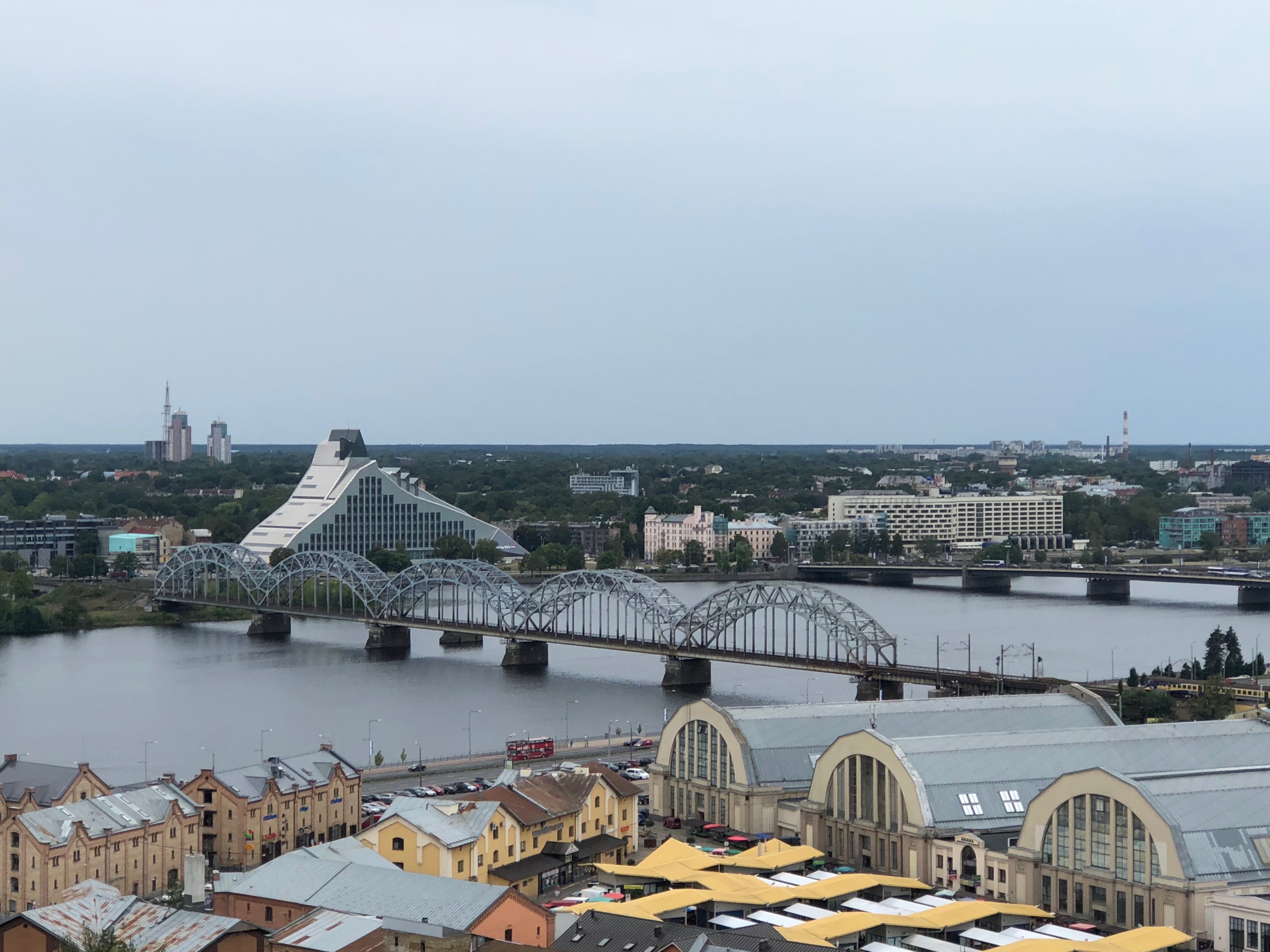
Pārdaugava, the region on the west bank of the Daugava River, is comprised of several districts and is easily reached by foot or tram from Vecrīga. If you have time to wander the residential streets of Pārdaugava, you will be sure to happen upon some of the best hole-in-the-wall restaurants and cafes in the city. The Victory Monument, which I already covered in a previous post, is one of the highlights of the area, but the first building you are likely to notice is the Latvijas Nacionālā Bibliotēka (Latvian National Library).
Latvijas Nacionālā Bibliotēka (Latvian National Library)
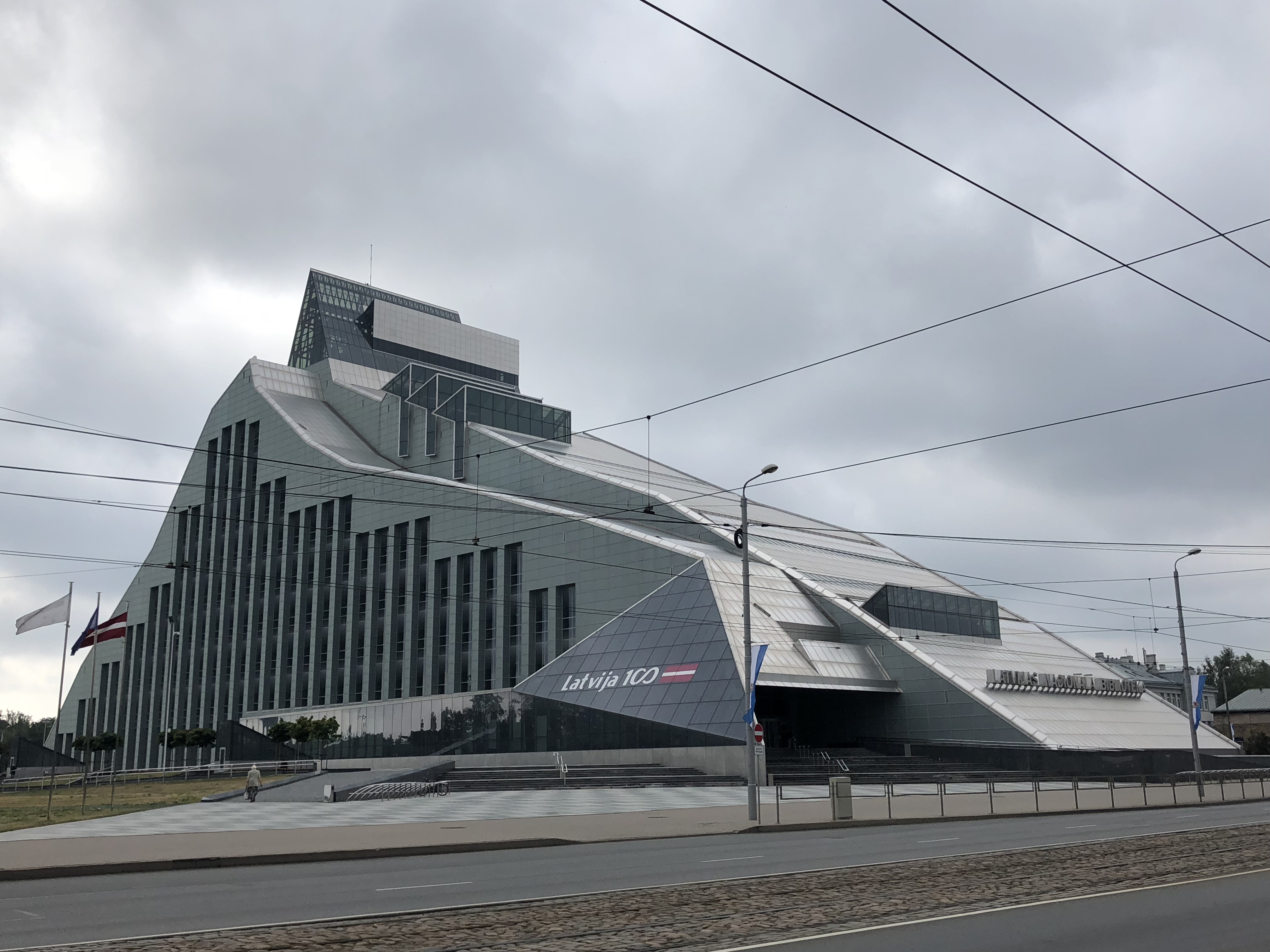
The National Library, also known as the Castle of Light, opened its 13-floor, ultra-modern new facility in 2014. A human chain was created from the old library in Central Rīga to the new building in Pārdaugava and a single book was symbolically passed from person to person to mark the passing of the torch from the historic library to the institution’s future.
Latvijas karogs (Latvian Flag)
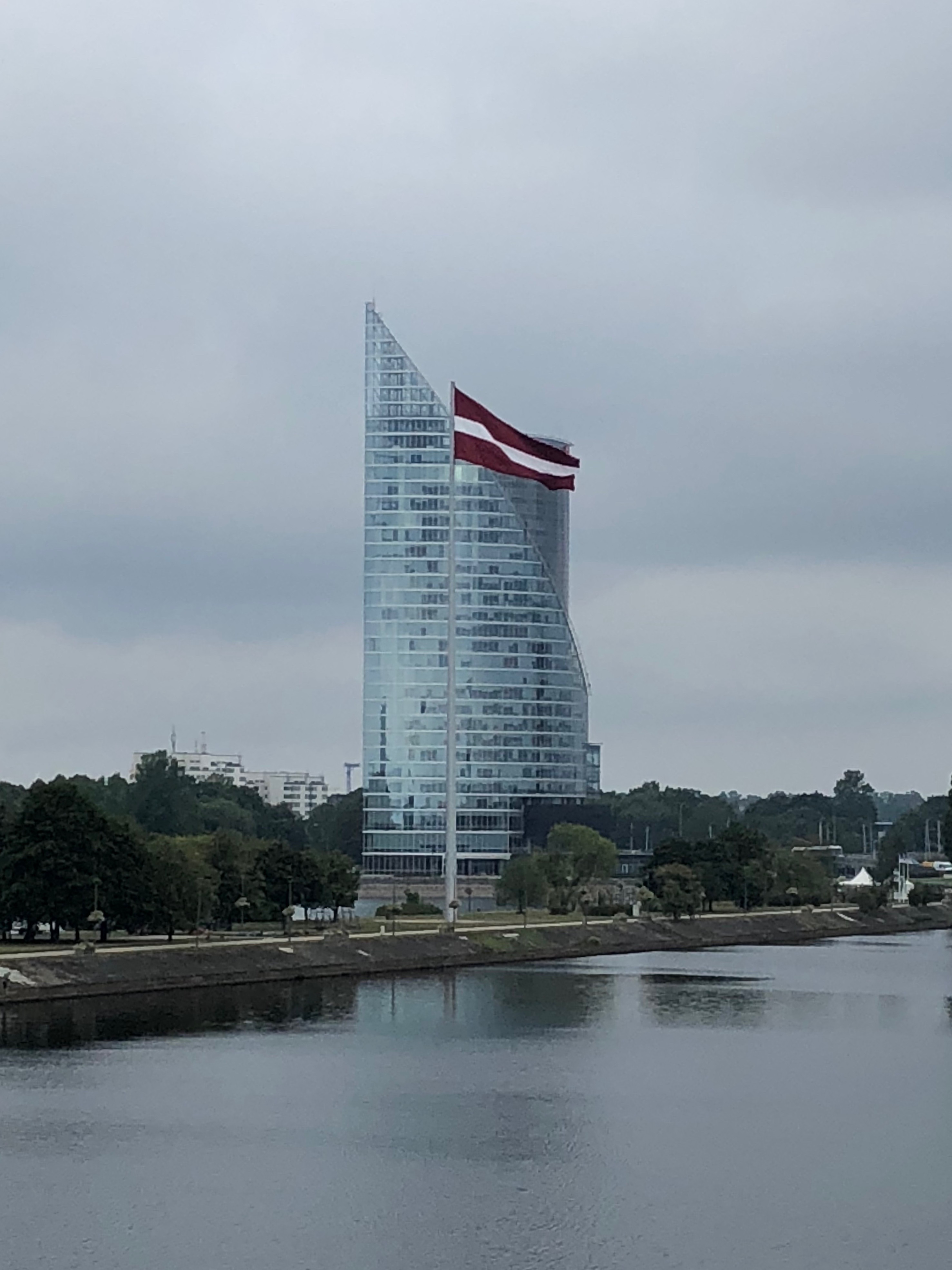
Along the river bank just north from the National Library you will notice the (unmissable) largest flag of Latvia fluttering in the wind. Work on an exhibit near the base was underway during my visit.
Uzvaras Park (Victory Park)
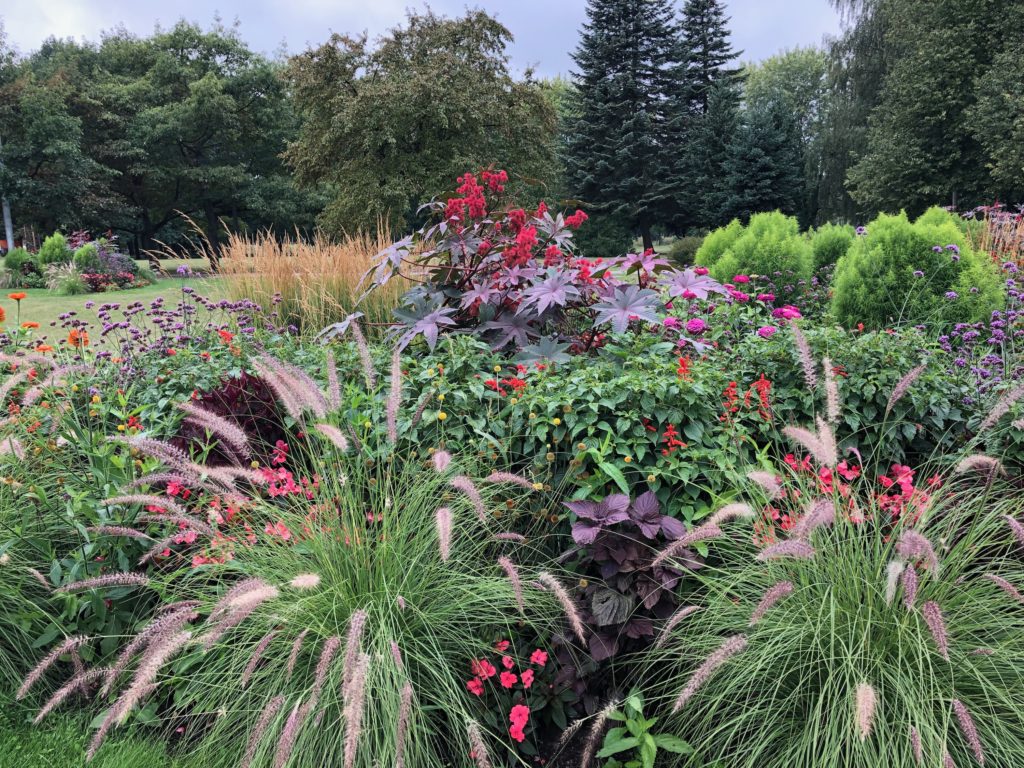
There’s more to Uzvaras Park (Victory Park) than the Victory Monument. Occupying 36 hectares (89 acres), the sizable park was built in 1909 and provides ample opportunity to exercise your body and relax your mind in a peaceful environment. The monument may be a source of consternation for many Latvians, but the rest of the park is full of joggers and bikers trying to burn off the calories of all delicious Latvian beer and chocolate that they consumed the night before.
As you can see, there’s a lot more to Rīga than it’s quaint old town, and if you plan on doing the city just, exploring some of its other neighborhoods is a must. Give yourself a good 4-5 days to not feel rushed in the capital. As always, I urge you to take your time and get off the beaten path.
